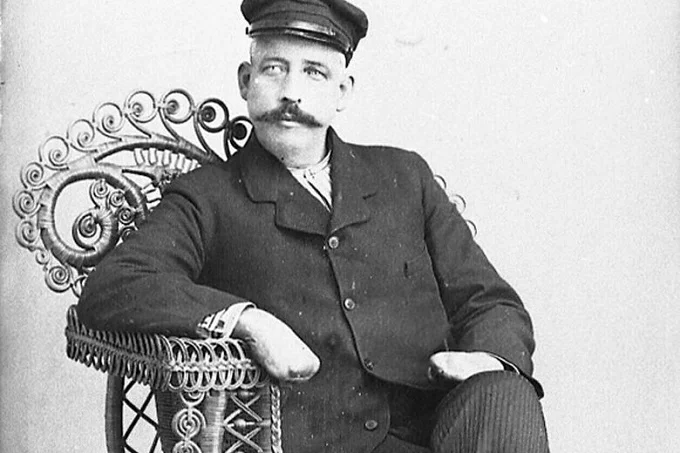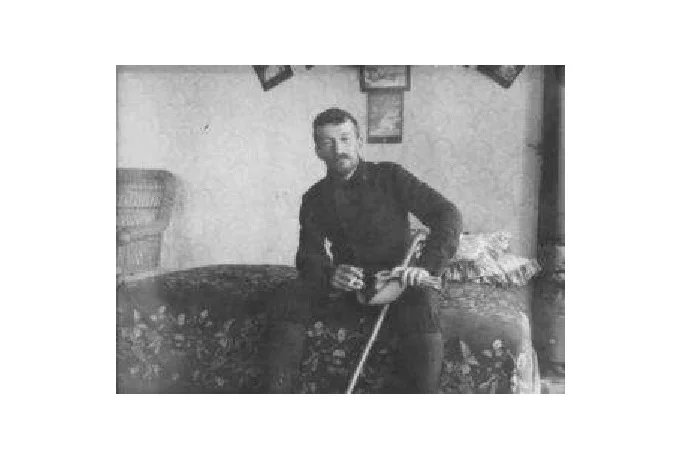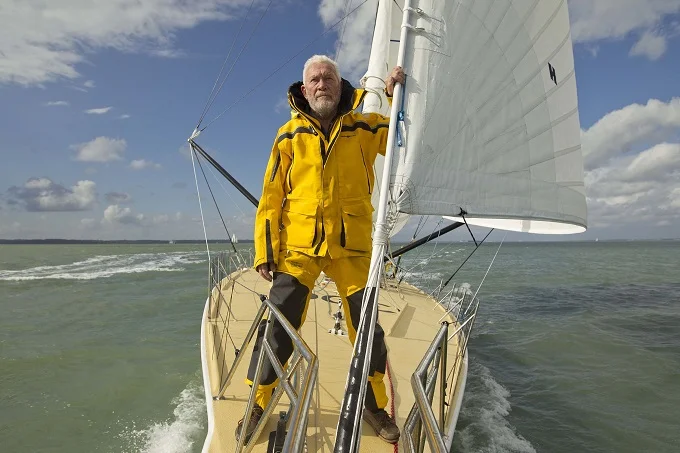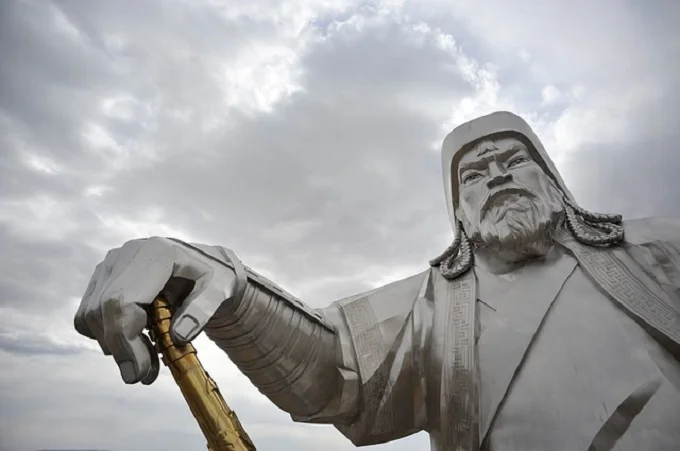Extreme peoples who completed a solo journey around the globe

A traveler without fingers, a world record holder, and other extraordinary individuals who completed a solo round of the globe, however, these travelers could conquer significant distances and problems on their own.
Howard Blackburn circumnavigated the globe alone on a sailing ship, partially on his feet and without fingers. Konstantin von Rengarten completed the world’s first trekking expedition around the globe, covering about 27 thousand kilometers in four years. Steve Fossett, alone in a balloon and then in a single-engine plane, circled the world. Fyodor Konyukhov, a Russian traveler, took part in a large number of journeys and established several records. Robin Knox-Johnston has completed two solo circumnavigations of the globe in a sailboat.
Howard Blackburn

This guy left an unforgettable impact not just with his looks but also with his steely determination. A catastrophe hit Howard’s life in the winter of 1883, and it altered everything. He and his pal Welch fished for halibut off the coast of Newfoundland. The weather abruptly shifted, trapping two teenage fishermen in a strong storm accompanied by cold and snow. Howard alone faced the weather for 5 days, forcing the dorn to the beach, while Welch perished of starvation and cold. His powerful physique allowed him to live, but he lost his fingers, heel, and five toes.
One may assume that after such experiences and such marine injuries, one would not want to ponder, but that was not the case with Howard Blackburn. He once read a book by Joshua Slocum about his solo round of the globe on a sailing ship. After being deeply struck by what he had read, he chose to go on a voyage from Gloucester, United States, to the United Kingdom. Alfred Jensen, a fellow countryman, was once able to cross along this passage.
In mid-June 1899, the Great Western sailing ship sailed out to sea for the first time. He brought food and water for 100 days, as well as booze, cigarettes, and cards. He also devised a variety of equipment to aid him in the operation of a huge sailboat.
Blackburn, however, swam at night and generally slept and cooked during the day. After 62 days at sea, the Great Western arrived at Gloucester after entering the River Severn and then the Bristol Canal. He was welcomed like a victor. But Howard was not content, and he resolved to go on a new journey aboard the Great Republic, the yacht he had bought. He challenged everyone to run alongside him in the race. It was critical to go from America to Europe as rapidly as possible. No one, however, dared.
The traveler returned to the route in early June 1900. This time, sailing proved difficult, and his boat was stranded for two weeks in the midst of the storm. However, he arrived in Portugal after 38 days. He was a winner when he returned to the United States. Following these successful journeys, Howard Blackburn conquered the rivers and lakes of North America and attempted to swim to the European beaches once again. After the final effort failed, the traveler had no choice but to return home.
Konstantine Rengarten

He was the first person to walk about 27 thousand kilometers by himself, demonstrating what an average person is capable of. Konstantine was a Russian baron who was born in 1864 in the Russian Empire.
He had wanted to embark on a maritime cruise since he was a boy, but his health prevented him from doing so. Rengarten eventually came to the conclusion that he could conquer the globe on foot. It took ten years to become ready.
Konstantine departed Riga and started his adventure on this crucial day, August 18, 1894. The crossing and capture of Persia’s realm was the most difficult thing for him. This nation welcomed him with unusually high temperatures of up to 50 degrees Celsius. It took 71 days for me to get over it. In addition, his route would take him to Tomsk without traveling through Central Asia. It took 36 days to traverse the Gobi Desert.
There was also China and the Japanese Islands to consider. Rengarten had to go by steamboat to the latter, as well as to the countries of North America. It took roughly two years to go throughout America.
The wanderer returned to Eurasia by steamboat after conquering these areas, then skirted these regions. In September 1898, Konstantin Rengarten returned to Riga. The locals embraced their victor enthusiastically, yelling “Hurray!” He walked around the globe in a little over four years, covering about 27 thousand kilometers on foot. He conquered North America and Eurasia and used steamers to span the Atlantic and Pacific seas.
Steve Fossett

The human record was named after James Stephen Fossett. At the age of 12, he conquered his first peak. Then there was his involvement in the scout movement, which provided him with several accomplishments and expertise. Steve, on the other hand, discovered that he disliked working in a group. He has no choice except to depend on himself. Steve was an astute businessman who was not afraid to take chances. As a result, he was able to attain job success and become a billionaire. He could now freely follow his radical interest.
Steve Fossett is a perfect example of a guy who accomplishes his objectives regardless of the circumstances. His solo circumnavigation in a balloon demonstrates this. True, it took him till the sixth time to do this. Fossett reached an altitude of roughly 11 thousand meters and traveled around the world in nearly 15 days on the Spirit of Freedom balloon in 2002.
In March 2005, he embarked on another epic expedition. Then he flew across the world in a single-engine jet plane called “GlobalFlyer.” Fossett did not make a single stop throughout the 67-hour voyage. This undertaking might turn out to be a disaster. The satellite navigation system failed first, and then a gasoline leak started. The aircraft “flew” like a rocket, due to a strong tailwind and surprisingly enough fuel for the whole voyage. But the most terrible part was the lack of sleep, the milkshakes he was given instead of meals, and the fact that there was no bathroom at all.
Steve Fossett established a new record a year later. He managed to travel a distance of 41,467 meters on the same aircraft. It was the world’s longest flight, lasting over 77 hours. Fossett perished tragically in the Sierra Nevada mountains after losing control of his aircraft due to heavy gusts of wind.
Fedor Konyukhov

Fedor Konyukhov’s life revolves around travel and extreme activities. He swam across the Sea of Azov on his father’s boat when he was fifteen years old—participated in sailing voyages and research expeditions on several occasions, both as part of a team and on his own. He traversed Chukotka on a dog sled in 1981. In 1990, he was credited with becoming the first Russian to reach the North Pole on skis in 72 days.
After five years, he journeys to the South Pole on his own. This voyage took 64 days to complete. He has climbed five mountains in five separate countries. One may go on and on about his trips and accomplishments, but Fedor Konyukhov is always on time.
The Russian intends to stun the whole world once again. The Albatross project got underway. His mission was to design an airplane with built-in solar-powered modules as the primary energy source. With this advancement, it would be able to go around the globe with a weight of up to 150 kg without landing. The Russian aircraft “Albatross” serves as a flying laboratory for gathering vital information.
The design and development of such an aircraft will take place between 2020 and 2021. The circumnavigation will still take place in December 2022. Fyodor Konyukhov, a Russian tourist, will have to fly through the Southern Hemisphere’s borders, crossing six continents and three seas. The trip will be 37 thousand kilometers long and will not include any landings. Travel time will be 180 hours or a little over a week.
Robin Knox-Johnston

Many yachtsmen have attempted to sail around the world without stopping. Robin Knox-Johnston, a British tourist, was the first to do it in 1968. Then he embarked on the Suhaili boat, which he completed in 312 days. Robin walked at a leisurely pace. It was more vital to be safe and return home.
Then there was a race in which eight sailors competed. The four participants immediately halted it. One ship sunk, the traveler on the second relocated for a reason, and the third ship altered course not far from the finish line for some reason (apparently by mistake). After 312 days, Robin Knox-Johnston was the only one to cross the finish line (Port Falmouth). He even authored a book on his trips later on.
It’s noteworthy to note that in 2007, the traveler opted to tackle the course on his own in a sailing ship and safely made it to the finish line. Then he took part in the race as well. He did not place first this time, but rather fourth. He was, however, a winner in his own right, having covered such a great distance by himself. Furthermore, Robin was of a respectable age, and he turned out to be the oldest of the contestants.




